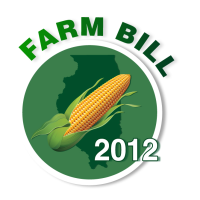Small Farms Ask Congress to End Farm Subsidies that Don’t Really Help Them

As the deeply divided House and Senate struggle to pass a five-year $500 billion farm bill before a September 30 deadline, 100 small farms in California have made a pitch to redirect subsidies created during the Great Depression back to the small farmers they were originally meant to help.
The California Public Interest Group (CALPIRG) rounded up the farmer signatures for a letter to Congress calling for ending direct-payment and crop insurance programs, and replacing them with agricultural subsidies that “best promote the public interest,” e.g. direct more money to them.
The letter also pleads for more practical decisions about what crops to subsidize. “Since 1995, $16.9 billion in taxpayer subsidies directly went to the production of junk food additives such as high fructose corn syrup. To put this last fact in proper context, only $262 million was spent subsidizing apple production during the same time period. Given our country’s obesity epidemic, this should be especially alarming.”
Currently, about 74% of U.S. agricultural subsidies go to just 4% of all farmers. Part of the reason for that is 15% of all farms produce most of the nation’s agricultural products while family farms fade away. Small and mid-size farmers actually saw a decrease in net income from agriculture between 2003 and 2007, increasingly subsidizing their income with work away from the farm.
They also subsidize their incomes with federal subsidies. Although their percentage of the total pie is small, 82% of small and medium farms receive some sort of government assistance. But, because they don’t have the economies of scale of their larger brethren, harvest more fruits and vegetables rather than commodity crops, and rely more on human labor and less on pesticides, machinery and fertilizers, they get hammered in the marketplace.
Although the 2008 Farm Bill technically set caps on how much any individual farm could receive in subsidies, the reality is quite different. “Thanks to numerous legal loopholes, lax enforcement, and loose definitions of what it means to be actively engaged in farming, essentially no caps currently exist,” according to a report by The Atlantic.
Farm subsidies didn’t use to work this way. Before globalization in the ‘70s, government programs helped manage supply, boost prices and conserve soil. A key grain reserve program was taken apart by the Republican-controlled Congress in the ‘90s, and other programs that helped farmers by stabilizing prices were marginalized. Subsequently, markets have driven down prices, and shifted government involvement from market stabilization to survival subsidies.
The Democratic-controlled Senate passed a farm bill in June that eliminated traditional farm subsidies and shifted back to a system that pays growers when crop revenues fall below a certain level, with crop insurance covering catastrophic losses. The bill also streamlines conservation programs, spurs the creation of “food hubs” to connect farmers to schools and other community-based consumers, assists organic farmers, and expands block grants to states for research and promotion of specialty crops.
The one area the Senate bill doesn’t do much cutting is food stamps, which represent about 80% of the farm bill. Around 46 million people receive $80 billion a year in assistance.
House Republicans have been unable to pass a bill and are currently favoring extending the current bill for a year.
–Ken Broder
To Learn More:
100 Small Farms in California Call for an End to Wasteful Subsidies in Farm Bill (CalPIRG)
Farm Bill Is “Stuck,” May Pass in November (by Charles Abbott, Reuters)
Senate Passes Farm Bill that Eliminates Crop Subsidies (by Jane Fyksen, Agri-View)
Overhauling the Farm Bill: The Real Beneficiaries of Subsidies (by Daniel Imhoff, The Atlantic)
Half of USDA Farm Subsidy Dollars Go to Just 4% of Farms (by Noel Brinkerhoff, AllGov)
- Top Stories
- Controversies
- Where is the Money Going?
- California and the Nation
- Appointments and Resignations
- Unusual News
- Latest News
- California Forbids U.S. Immigration Agents from Pretending to be Police
- California Lawmakers Urged to Strip “Self-Dealing” Tax Board of Its Duties
- Big Oil’s Grip on California
- Santa Cruz Police See Homeland Security Betrayal in Use of Gang Roundup as Cover for Immigration Raid
- Oil Companies Face Deadline to Stop Polluting California Groundwater





